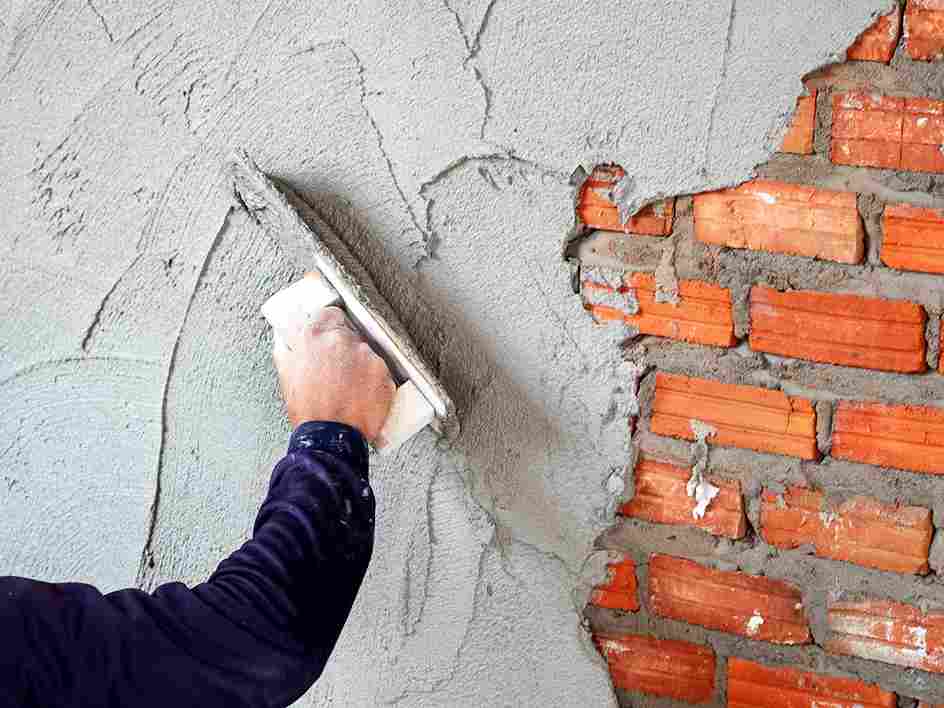Plaster has been a vital material in construction and interior design for centuries, offering a smooth finish, fire resistance, and excellent durability to walls and ceilings. However, not all plaster types are created equal. Each kind has its unique properties, applications, and benefits, making it essential to select the right one for your specific needs. In this guide, we’ll explore the different types of plaster, their uses, and tips for choosing the best one for your project.
1. Lime Plaster
Lime plaster is one of the oldest types of plaster, used extensively in ancient civilizations. It’s made from lime, sand, and water, which forms a strong and durable surface after curing. Lime plaster is known for its ability to handle moisture well, making it a popular choice in areas with high humidity.
- Properties: Breathable, moisture-resistant, and naturally antibacterial.
- Uses: Ideal for historic buildings, eco-friendly construction, and outdoor walls.
- Advantages: Prevents mold growth and is environmentally friendly.
- Disadvantages: Longer curing time compared to other types of plaster.
2. Cement Plaster
Cement plaster is made by mixing cement, sand, and water to form a strong, dense layer. It’s commonly used in modern construction and provides a durable, weather-resistant surface. Cement plaster can withstand moisture well, but it’s less breathable than lime plaster.
- Properties: Hard, durable, and moisture-resistant.
- Uses: Exterior and interior walls, especially in basements and bathrooms.
- Advantages: Excellent for wet environments, cost-effective, and durable.
- Disadvantages: Less breathable, can develop cracks if applied improperly.
3. Gypsum Plaster
Gypsum plaster is a modern plaster type that’s commonly used for interior applications. It’s made from gypsum, which is a naturally occurring mineral. Gypsum plaster sets quickly and provides a smooth finish, which makes it popular in residential and commercial interiors.
- Properties: Lightweight, smooth, and fast-setting.
- Uses: Interior walls and ceilings, including false ceilings.
- Advantages: No curing time required, smooth finish, easy to paint.
- Disadvantages: Not suitable for damp or exterior surfaces.
4. Clay Plaster
Clay plaster, also known as mud plaster, is an eco-friendly and natural plaster option made from clay, sand, and natural fibers. This type of plaster has been used for thousands of years and is experiencing a resurgence in sustainable and eco-conscious construction.
- Properties: Breathable, natural, and eco-friendly.
- Uses: Ideal for eco-friendly homes, indoor walls, and artistic finishes.
- Advantages: Non-toxic, reusable, and offers unique aesthetic appeal.
- Disadvantages: Susceptible to water damage, requires regular maintenance.
5. Venetian Plaster
Venetian plaster, or polished plaster, is known for its luxurious, marble-like finish. Made from a blend of lime and marble dust, Venetian plaster is a decorative plaster that can add an elegant and polished look to any space.
- Properties: Polished, glossy, and highly aesthetic.
- Uses: Interior decorative walls, accent walls, and upscale interiors.
- Advantages: Durable, luxurious appearance, available in various colors.
- Disadvantages: Expensive, requires skilled application.
6. Acrylic Plaster
Acrylic plaster is a synthetic plaster type made from acrylic resins and other additives. It’s flexible, water-resistant, and suitable for both indoor and outdoor applications, providing excellent durability and weather resistance.
- Properties: Flexible, water-resistant, and durable.
- Uses: Both indoor and outdoor walls, especially in high-traffic areas.
- Advantages: Versatile, available in many colors, easy to clean.
- Disadvantages: Costly compared to traditional plaster types, can be prone to fading.
7. Stucco Plaster
Stucco plaster is a type of exterior plaster typically used in Mediterranean, Spanish, and Southwestern architecture. Made from a mixture of cement, sand, and lime, stucco is highly durable and often used to cover exterior walls.
- Properties: Durable, weather-resistant, and textured.
- Uses: Exterior walls, garden walls, and decorative finishes.
- Advantages: Long-lasting, low-maintenance, and provides unique textures.
- Disadvantages: Requires regular maintenance, can crack in extreme weather.
8. Bonding Plaster
Bonding plaster is used as a base layer for other types of plaster, particularly when working on smooth surfaces or walls that need extra adhesion. This type of plaster is excellent for creating a base on difficult surfaces like concrete or low-porosity materials.
- Properties: Adhesive, smooth, and versatile.
- Uses: Base layer for gypsum and cement plaster.
- Advantages: Improves adhesion on difficult surfaces, sets quickly.
- Disadvantages: Not suitable as a standalone plaster; requires a top layer.
How to Choose the Right Type of Plaster
When selecting a plaster type for your project, consider the following factors:
- Location: For exterior walls, opt for a durable and weather-resistant plaster like cement or stucco. For interiors, gypsum and Venetian plasters offer excellent finishes.
- Purpose: If aesthetics are a priority, Venetian or clay plaster can add unique textures. For eco-conscious projects, clay and lime plaster are ideal choices.
- Environment: In high-moisture areas, use cement or acrylic plaster for extra moisture resistance. Avoid gypsum plaster in wet areas, as it’s less moisture-resistant.
FAQs about Types of Plaster
Q1. Can I use gypsum plaster for exterior walls?
No, gypsum plaster is not suitable for exterior applications as it lacks moisture resistance.
Q2. Which plaster is best for decorative finishes?
Venetian plaster is highly recommended for decorative finishes due to its polished and luxurious appearance.
Q3. Is lime plaster environmentally friendly?
Yes, lime plaster is one of the most eco-friendly types of plaster as it’s natural, breathable, and has a minimal environmental impact.
Conclusion
Understanding the different types of plaster and their unique properties can help you make an informed decision for your next construction or renovation project. Whether you’re seeking durability, aesthetic appeal, or eco-friendliness, there’s a plaster type suited to your needs. Remember to consider your environment, the purpose of the plaster, and the aesthetic you want to achieve for a successful and long-lasting result.
By choosing the right plaster, you can enhance both the functionality and beauty of your space for years to come.


